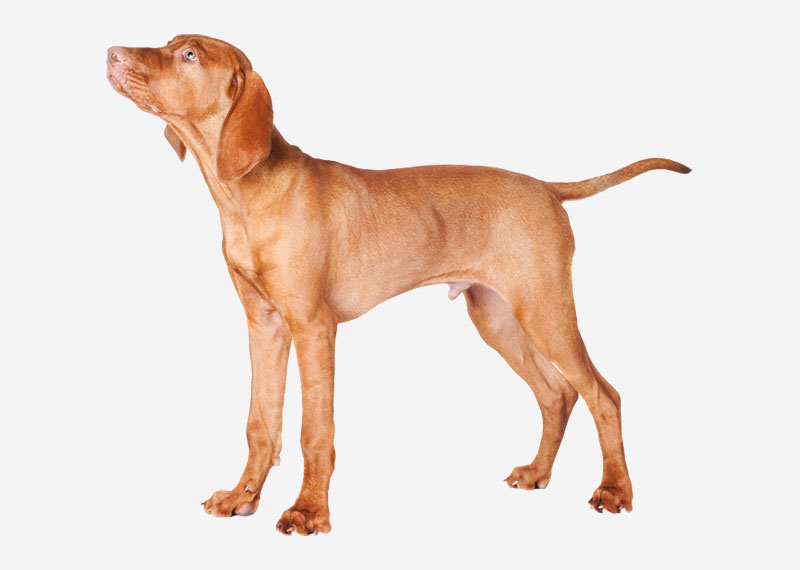The Vizsla is a dog breed originating in Hungary, which belongs under the FCI Pointer Group. The Hungarian or Magyar Vizsla are sporting dogs and loyal companions, in addition to being the smallest of the all-round pointer-retriever breeds. The Vizsla's medium size is one of the breed's most appealing characteristics as a hunter of fowl and upland game, and through the centuries the Vizsla has held a rare position among sporting dogs – that of household companion and family dog.The Vizsla is a natural hunter endowed with an excellent nose and an outstanding trainability. Although they are lively, gentle mannered, demonstrably affectionate and sensitive, they are also fearless and possessed of a well-developed protective instinct.
History
The Vizsla was already known in early Hungarian history. The ancestors of the present Vizsla were the trusted and favorite hunting dogs of the Magyar tribes who lived in the Carpathian Basin in the 10th century. Primitive stone etchings over a thousand years old show the Magyar hunter with his falcon and his Vizsla.The first written reference to Vizsla dog breed has been recorded in the Illustrated Vienna Chronicle prepared on order of King Lajos the Great (Louis the Great) by the Carmelite Friars in 1357.Companion dogs of the early warlords and barons, Vizsla blood was preserved pure for centuries by the land-owning aristocracy who guarded them jealously and continued to develop the hunting ability of these "yellow-pointers". Records of letters and writings show the high esteem in which the Vizsla was held.The Vizsla survived the Turkish occupation (1526–1696), the Hungarian Revolution (1848–49), World War I, World War II and the Soviet Period. However, Vizslas faced and survived several near-extinctions in their history, including being overrun by Pointer (dog breed)s and German Shorthair Pointers in the 1800s (Boggs, 2000:19) and again to near-extinction after World War II. There are two breed clubs for the Vizsla in Britain, The Hungarian Vizsla Club and The Hungarian Vizsla Society. The winner of the Best In Show award at Crufts 2010 was a Vizsla named Hungargunn Bear It'n Mind.
Vizsla in the U.S.
Frank J. Tallman and Emmett A. Scanlan imported Vizsla Sari as the first Vizsla in the United States of America.Sari and her two pups (Tito and Shasta) were delivered by a TWA cargo plane to Kansas City, Missouri via New York from Rome on October 7, 1950.
*Major League Baseball pitcher, Mark Buehrle, owns three Vizslas, Drake, Duke and Diesel
*The Hungarian cartoon Frakk, a macskák réme ("Frakk,the nightmare of cats") centers around a vizsla dog named Frakk
Health
A Vizsla Club of America survey puts the average lifespan of the Vizsla at 9.15 years. The Vizsla is considered to be a robust dog, but some localized breeding programs using a small number of dogs have led to heritable illnesses in some offspring, including:
- Hip dysplasia is very rare but remotely possible.
- Canine Epilepsy
- Cancer (Lipoma, Mast Cell Tumors, Hemangiosarcoma, Lymphoma)
- Sebaceous adenitis
Responsible breeders do not select dogs for breeding if they have such inherent problems.
Vizslas can also suffer from hypothyroidism, dwarfism, persistent right aortic arch, tricuspid valve dysplasia, and progressive retinal atrophy. Major risks include epilepsy and lymphosarcoma. Vizslas can also be prone to skin and food allergies.Unlike many other dogs, Vizslas do not have an undercoat. Therefore they are unsuited for living outdoors. They must be housed indoors with the family to ensure a healthy, happy dog.






